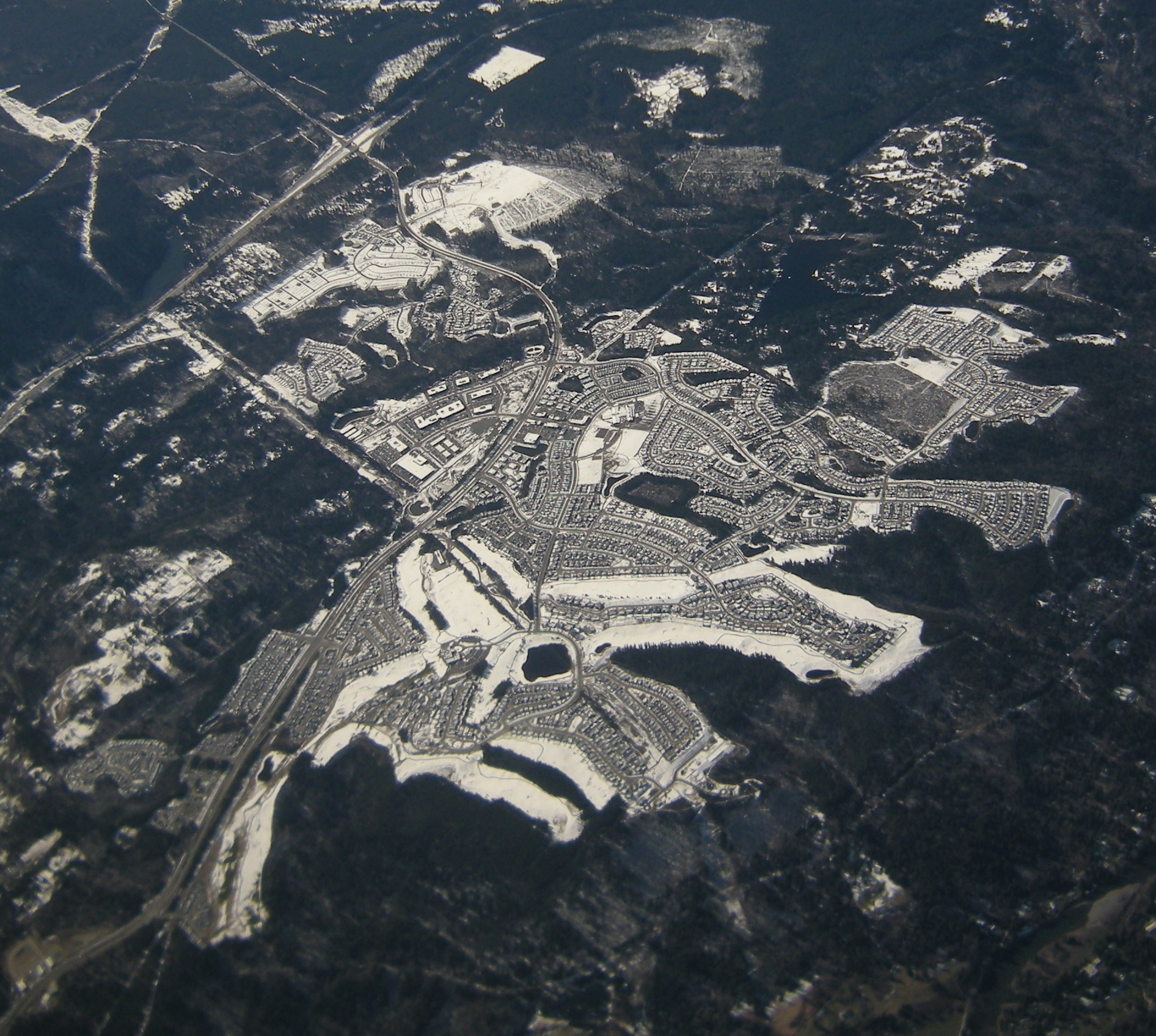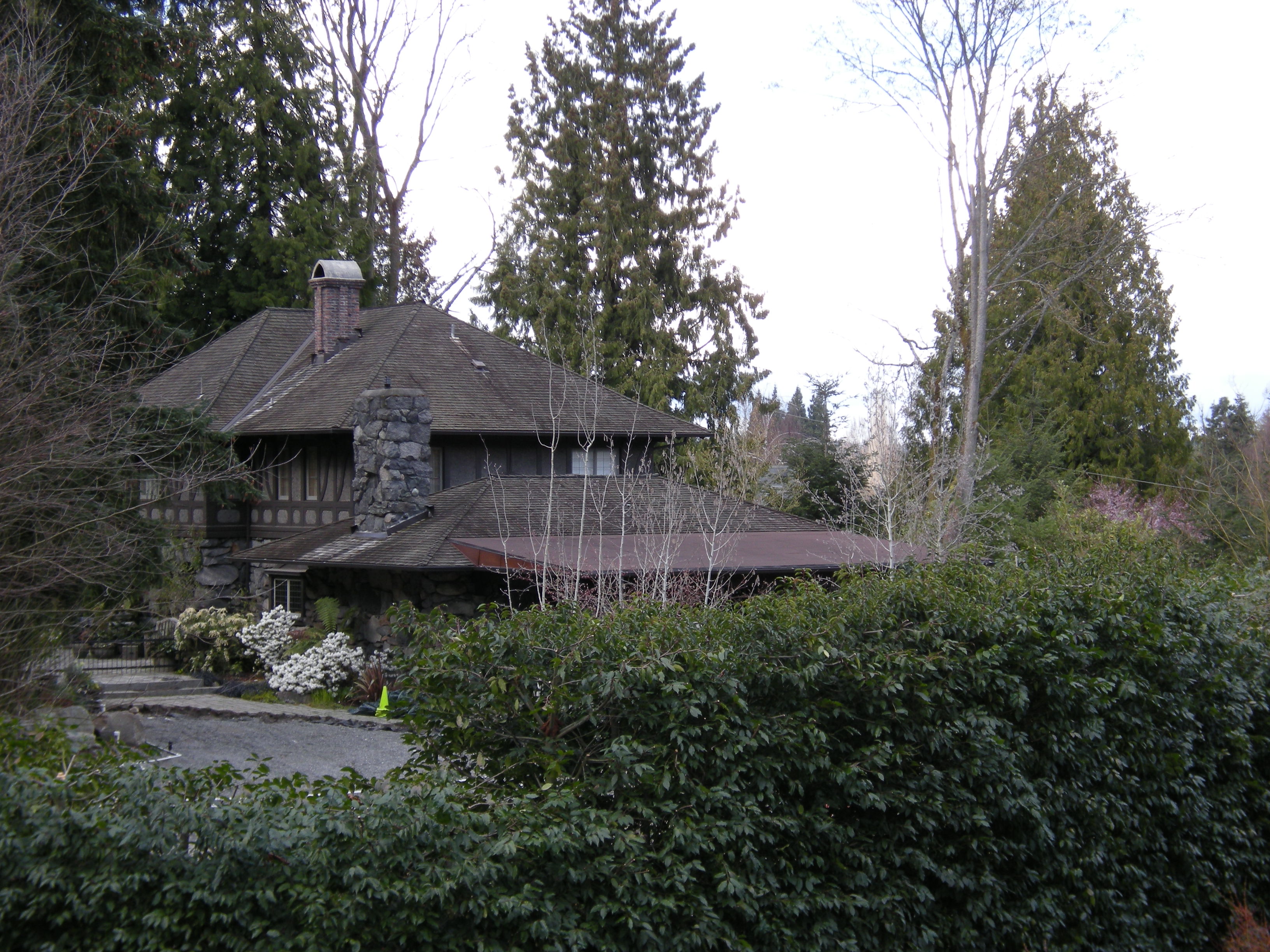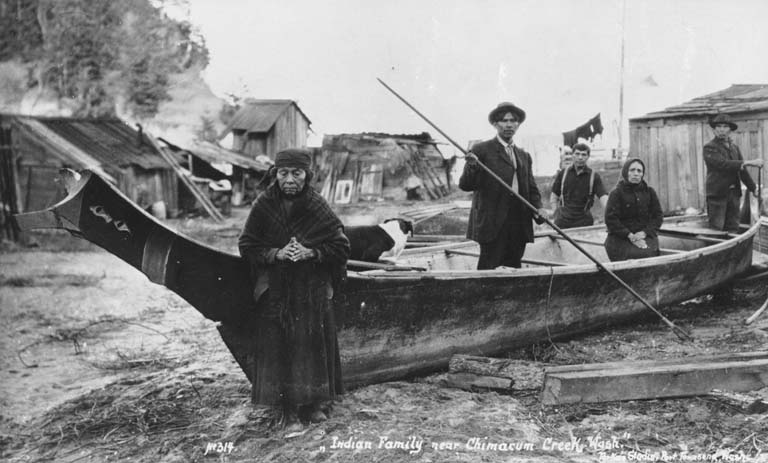|
University District, Seattle
The University District (commonly the U District) is a neighborhood and a major district in central northeastern Seattle, Washington, comprising several distinct neighborhoods. The main campus of the University of Washington (UW) is located in the district, lending its name to both the district as well as University Way NE (commonly The Ave). The neighborhood lies north of Portage Bay and the Lake Washington Ship Canal and generally east of Interstate 5. The area, originally a Duwamish settlement, was surveyed by the territorial government in 1855 and opened to settlement in 1867. Real estate developers created the Brooklyn neighborhood on the west side of the district in the 1890s, which was followed by the relocation of the UW campus to the east side of the district in 1895. The name Brooklyn faded from use in favor of "University District", which was adopted after a public contest in 1919. Location Like all Seattle neighborhoods, the boundaries of the University Distri ... [...More Info...] [...Related Items...] OR: [Wikipedia] [Google] [Baidu] |
Neighborhoods In Seattle
The city of Seattle, Washington, contains many districts and neighborhoods. The city's former mayor Greg Nickels has described it as "a city of neighborhoods". Early European settlers established widely scattered settlements on the surrounding hills, which grew into neighborhoods and autonomous towns. Conurbations tended to grow from such towns or from unincorporated areas around trolley stops during the 19th and early 20th centuries; the city has consequently suffered from transportation and street-naming problems. Definition of Seattle neighborhoods Seattle was established during an boom and bust, economic boom fueled by the timber industry; its early years were characterized by hasty expansion and development, under which residential areas were loosely defined by widely scattered plats. This arrangement was further solidified by the establishment of locally initiated community clubs, public libraries, public schools, and public parks, which created a sense of community an ... [...More Info...] [...Related Items...] OR: [Wikipedia] [Google] [Baidu] |
Burke Museum
The Burke Museum of Natural History and Culture (commonly as Burke Museum) is a natural history museum on the campus of the University of Washington, in Seattle, Washington (state), Washington, United States. It is administered by the University of Washington College of Arts and Sciences, UW College of Arts and Sciences. Established in 1899 as the Washington State Museum, the museum traces its origins to a high school naturalist club formed in 1879. The museum is the oldest in Washington state and boasts a collection of more than 16 million artifacts, including the world's largest collection of spread bird wings. The Burke Museum is the official state museum of Washington. History Young Naturalists Society The roots of the Burke Museum can be traced to a natural history club formed by high school students in the 19th century. The group was formed in December 1879 by students Edmond S. Meany, J. O. Young, P. Brooks Randolph, and Charles Denny. Denny's father, city founder Arthu ... [...More Info...] [...Related Items...] OR: [Wikipedia] [Google] [Baidu] |
Snoqualmie, Washington
Snoqualmie ( ) is a city next to Snoqualmie Falls in King County, Washington, United States. It is east of Seattle. Snoqualmie is home to the Northwest Railway Museum. The population was 14,121 at the 2020 census. Etymology The name "Snoqualmie" comes from the name of the indigenous people of the same name. It is an Anglicization of the Lushootseed name ''sdukʷalbixʷ'', which means "people of the moon". History The second written record of the exploration of the Snoqualmie Valley comes from the notes of Samuel Hancock, who ventured up-river with the Snoqualmie tribe in 1851 in search of coal. Near the current location of Meadowbrook Bridge, Hancock was told by his guides that the land was known as ''Hyas Kloshe Illahee'', or "good/productive land". Hancock took this useful information back with him to the area now known as Tacoma. The area that is now Snoqualmie had been continuously occupied by members of the Snoqualmie Tribe and their ancestors for at least 13,000 ... [...More Info...] [...Related Items...] OR: [Wikipedia] [Google] [Baidu] |
Burke–Gilman Trail
The Burke–Gilman Trail is a rail trail in King County, Washington. The multi-use recreational trail is part of the King County Regional Trail System and occupies an abandoned Seattle, Lake Shore and Eastern Railway (SLS&E) corridor. A portion of the Burke–Gilman trail is managed by the City of Seattle. The trail begins at 11th Avenue NW in Ballard and follows along the Lake Washington Ship Canal and north along Lake Washington, designated as ending in Bothell. Route The trail is a substantial part of the of signed bike routes in Seattle and the of trails in the King County Trails System. A segment of the Burke–Gilman portion, opened in July 2005, runs for from NW 60th Street and Seaview Avenue NW to the Ballard Locks. The main trail resumes at 11th Avenue NW and NW 45th Street and runs to Blyth Park in Bothell. There, it becomes the Sammamish River Trail segment, which parallels the Sammamish River for to Redmond. The Burke–Gilman trail runs along th ... [...More Info...] [...Related Items...] OR: [Wikipedia] [Google] [Baidu] |
Elliott Bay
Elliott Bay is a part of the Central Basin region of Puget Sound. It is in the U.S. state of Washington, extending southeastward between West Point in the north and Alki Point in the south. Seattle was founded on this body of water in the 1850s and has since grown to encompass it completely. The waterway it provides to the Pacific Ocean has served as a key element of the city's economy, enabling the Port of Seattle to become one of the busiest ports in the United States. History The Duwamish people have lived in the vicinity of Elliott Bay and the Duwamish River for thousands of years and had established at least 17 settlements by the time white settlers came in the 1850s. Among the earliest white settlements was by the Denny Party at New York Alki, which is in the present-day neighborhood of Alki in West Seattle, however after a hard winter they shifted across Elliott Bay near the present-day Pioneer Square, which became Seattle. Over the years the city expanded to cover ... [...More Info...] [...Related Items...] OR: [Wikipedia] [Google] [Baidu] |
Montlake, Seattle
Montlake is a wealthy residential neighborhood in central Seattle, Washington. It is located along the Montlake Cut of the Lake Washington Ship Canal, bounded to the north by Portage Bay, to the east by the Washington Park Arboretum, and to the south and west by Interlaken Park. Capitol Hill is on its south and west sides, and the University of Washington campus lies across the Montlake Cut to the north. State Route 520 runs through the northern tip of Montlake, isolating four blocks from the rest of the neighborhood. The (unofficial) City Clerk's map of Montlake considers it to extend further west, past Interlaken Park, extending to Broadway Avenue E. and, between Lynn Street and State Route 520, all the way to Interstate 5. Though sports at the University of Washington are referred to metonymically as "Montlake," UW sports facilities are not located within the traditional bounds of the neighborhood; instead, they are located on Montlake Boulevard, across the Montl ... [...More Info...] [...Related Items...] OR: [Wikipedia] [Google] [Baidu] |
Bellevue, WA
Bellevue ( ) is a city in the Eastside region of King County, Washington, United States, located across Lake Washington from Seattle. It is the third-largest city in the Seattle metropolitan area, and the fifth-largest city in Washington. It has variously been characterized as a satellite city, a suburb, a boomburb, or an edge city. The population was 151,854 at the 2020 census. The city's name is derived from the French term ("beautiful view"). Bellevue is home to some of the world's largest technology companies. Before and after the 2008 recession, its downtown area has been undergoing rapid change with many high-rise projects being constructed. Downtown Bellevue is currently the second-largest city center in Washington state, with 1,300 businesses, 45,000 employees, and 10,200 residents. In a 2018 estimate, the city's median household income was among the top five cities in the state of Washington. In 2008, Bellevue was number one in CNNMoney's list of the best places ... [...More Info...] [...Related Items...] OR: [Wikipedia] [Google] [Baidu] |
Newcastle, Washington
Newcastle is an Eastside (King County, Washington), Eastside city in King County, Washington, King County, Washington (state), Washington, United States. The population was 13,017 at the 2020 United States Census, 2020 census. Although Newcastle was not incorporated until 1994, it has been an important settlement and town since the late 19th century and played a major role in the development of Seattle and the Seattle metropolitan area, surrounding region. Newcastle was one of the region's first coal mining areas and its rail transport, railroad link to Seattle was the first in King County. Lumber, Timber also played a role in the early history of Newcastle. Coal delivered by rail from Newcastle's mines to Seattle fueled the growth of the Port of Seattle and attracted railroads, most notably the Great Northern Railway (U.S.), Great Northern Railway. The Newcastle coal mine began producing coal by the 1870s. More than 13 million tons of coal had been extracted by the time the min ... [...More Info...] [...Related Items...] OR: [Wikipedia] [Google] [Baidu] |
Thuja Plicata
''Thuja plicata'' is a large evergreen coniferous tree in the family Cupressaceae, native to the Pacific Northwest of North America. Its common name is western redcedar in the U.S. or western red cedar in the UK, and it is also called pacific red cedar, giant arborvitae, western arborvitae, just cedar, giant cedar, or shinglewood. It is not a true cedar of the genus ''Cedrus''. ''T. plicata'' is the largest species in the genus ''Thuja'', growing up to tall and in diameter. It mostly grows in areas that experience a mild climate with plentiful rainfall, although it is sometimes present in drier areas on sites where water is available year-round, such as wet valley bottoms and mountain streamsides. The species is shade-tolerant and able to establish in forest understories and is thus considered a climax species. It is a very long-lived tree, with some specimens reaching ages of well over 1,000 years. Indigenous peoples of the Pacific Northwest use the wood of this species for ma ... [...More Info...] [...Related Items...] OR: [Wikipedia] [Google] [Baidu] |
Douglas Fir
The Douglas fir (''Pseudotsuga menziesii'') is an evergreen conifer species in the pine family, Pinaceae. It is the tallest tree in the Pinaceae family. It is native to western North America and is also known as Douglas-fir, Douglas spruce, Oregon pine, and Columbian pine. There are three varieties: coast Douglas-fir (''P. menziesii'' var. ''menziesii''), Rocky Mountain Douglas-fir (''P. menziesii'' var. ''glauca'') and Mexican Douglas-fir (''P. menziesii'' var. ''lindleyana''). Despite its common names, it is not a true fir (genus '' Abies''), spruce (genus '' Picea''), or pine (genus ''Pinus''). It is also not a hemlock; the genus name ''Pseudotsuga'' means "false hemlock". Description Douglas-firs are medium-sized to extremely large evergreen trees, tall (although only coast Douglas-firs reach heights near 100 m) and commonly reach in diameter, although trees with diameters of almost exist. The largest coast Douglas-firs regularly live over 500 years, with the ol ... [...More Info...] [...Related Items...] OR: [Wikipedia] [Google] [Baidu] |
Seattle Map - Sanborn Perris 1893 - U
Seattle ( ) is the most populous city in the U.S. state of Washington and in the Pacific Northwest region of North America. With a population of 780,995 in 2024, it is the 18th-most populous city in the United States. The city is the county seat of King County, the most populous county in Washington. The Seattle metropolitan area's population is 4.02 million, making it the 15th-most populous in the United States. Its growth rate of 21.1% between 2010 and 2020 made it one of the country's fastest-growing large cities. Seattle is situated on an isthmus between Puget Sound, an inlet of the Pacific Ocean, and Lake Washington. It is the northernmost major city in the United States, located about south of the Canadian border. A gateway for trade with East Asia, the Port of Seattle is the fourth-largest port in North America in terms of container handling . The Seattle area has been inhabited by Native Americans (such as the Duwamish, who had at least 17 villages around Elliot ... [...More Info...] [...Related Items...] OR: [Wikipedia] [Google] [Baidu] |
Coast Salish Peoples
The Coast Salish peoples are a group of ethnically and linguistically related Indigenous peoples of the Pacific Northwest Coast, living in the Canadian province of British Columbia and the U.S. states of Washington and Oregon. They speak one of the Coast Salish languages. The Coast Salish are a large, loose grouping of many nations with numerous distinct cultures and languages. Territory claimed by Coast Salish peoples span from the northern limit of the Salish Sea on the inside of Vancouver Island and covers most of southern Vancouver Island, all of the Lower Mainland and most of Puget Sound and the Olympic Peninsula (except for territories of the Chemakum people). Their traditional territories coincide with modern major metropolitan areas, namely Victoria, Vancouver, and Seattle. The Tillamook or Nehalem around Tillamook, Oregon are the southernmost of the Coast Salish peoples. Coast Salish cultures differ considerably from those of their northern neighbours. Th ... [...More Info...] [...Related Items...] OR: [Wikipedia] [Google] [Baidu] |









